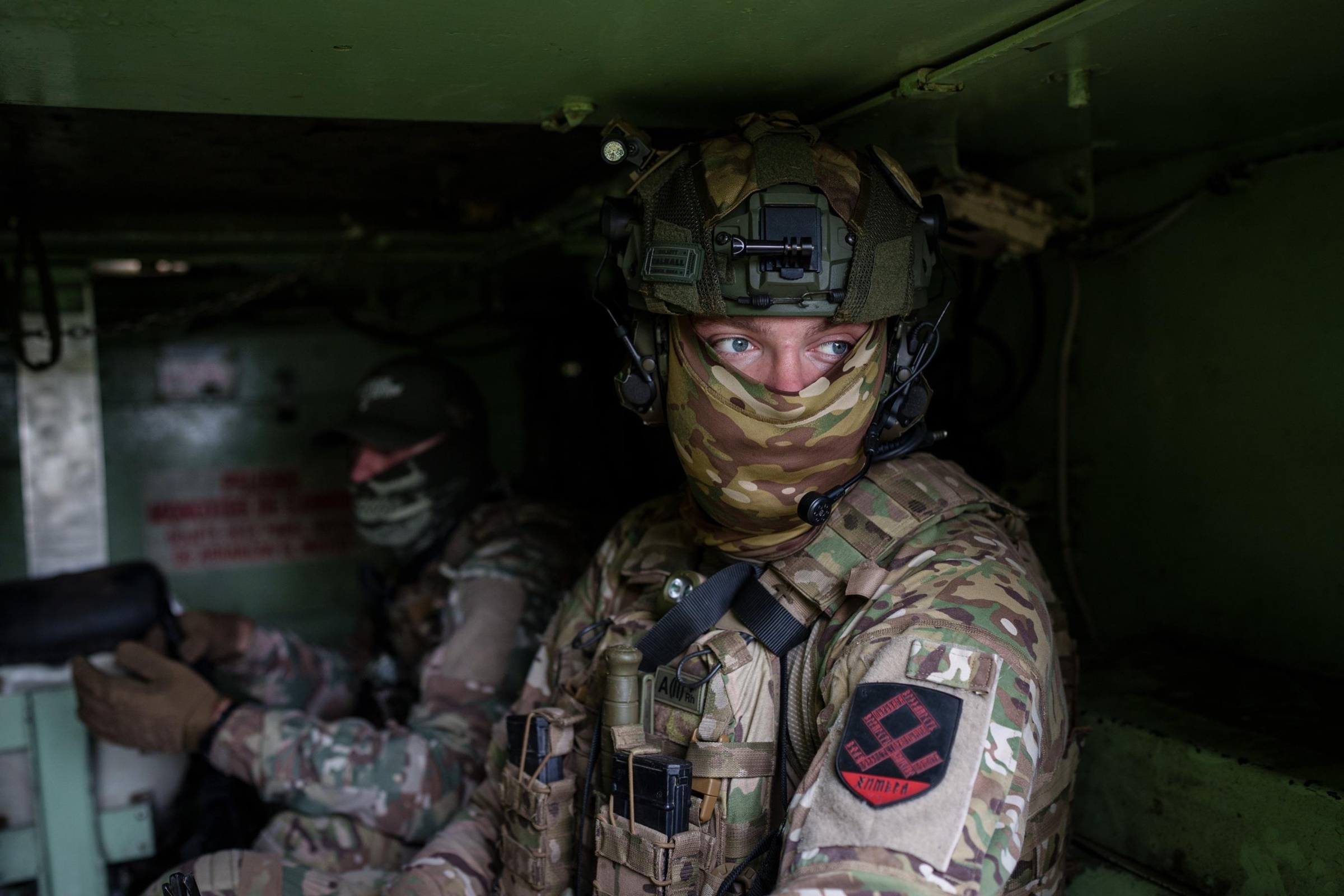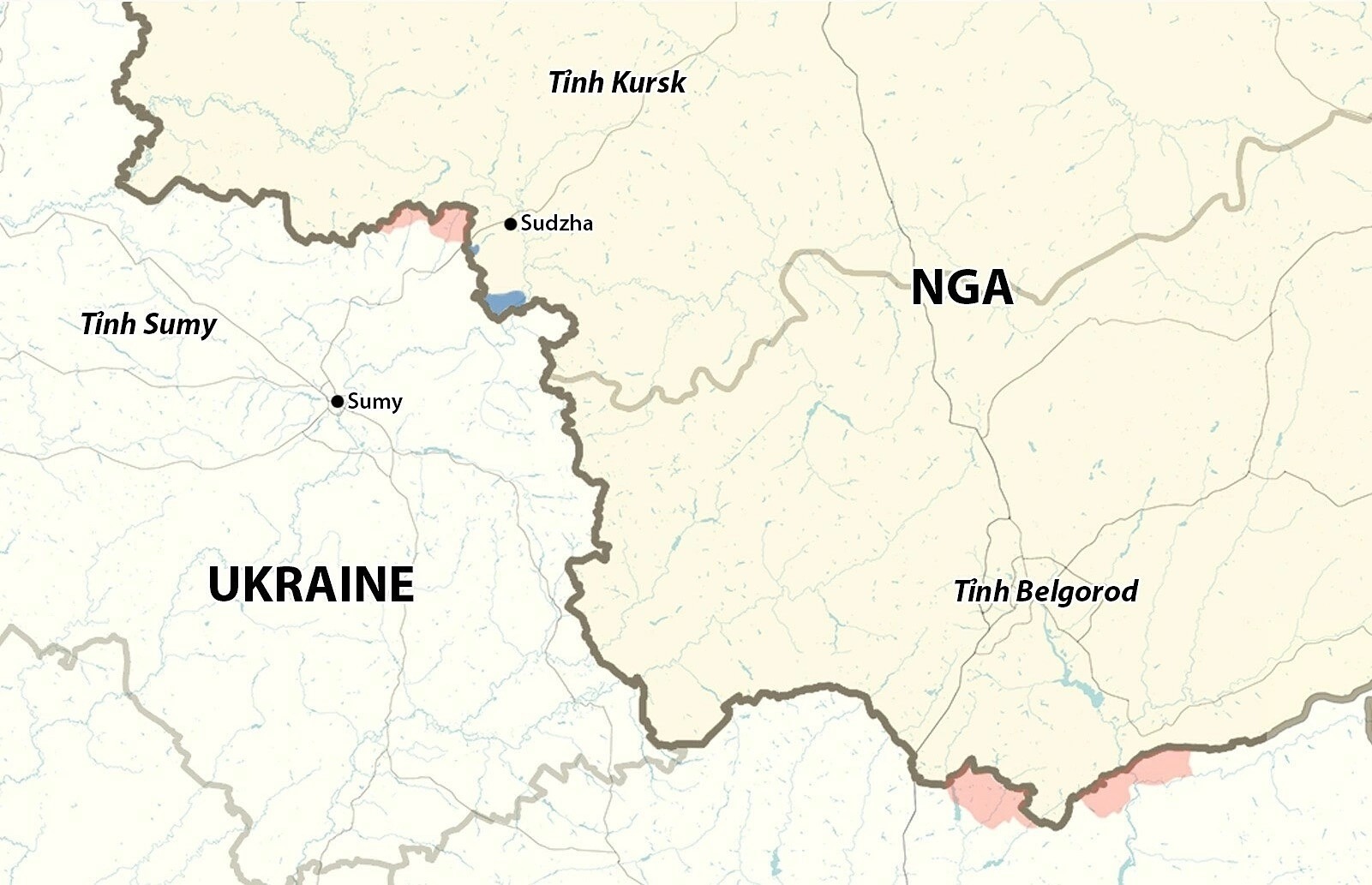Russian forces are only 19 km from Sumy city, the capital of the Sumy region in northern Ukraine. This is one of Moscow’s new targets as the Kremlin gains a significant troop advantage along multiple front-line locations.
After pushing Ukrainian troops almost entirely out of Russia's Kursk region earlier this year, Russian soldiers are now advancing across the border in the opposite direction. With 50,000 troops in the area, they outnumber Ukrainian forces by approximately 3 to 1, according to Ukrainian soldiers fighting there.
 |
Ukrainian soldiers fighting near Sumy city, the capital of the Sumy region. Photo: WSJ |
Ukrainian soldiers fighting near Sumy city, the capital of the Sumy region. Photo: WSJ
“Their main tactic is to exhaust us with superior numbers,” said Ukrainian commander Oleksandr Syrskiy, referring to the Russian forces.
The intensified Russian offensive in Sumy comes as former US President Donald Trump expresses increasing frustration with the Kremlin’s unwillingness to move toward a ceasefire with Ukraine.
Despite peace talks between Ukraine and Russia held in Turkey in recent weeks, Moscow has increased missile and unmanned aerial vehicle (UAV) attacks on Ukrainian cities. On 29/6, Ukraine lost an F-16 fighter jet while responding to Russia’s largest such attack since the beginning of the war.
General Syrskiy said that in the past year, the front line has expanded by more than 161 km and now stretches over 1,200 km in an arc from northeastern Ukraine to the south.
Russian forces constantly probe different locations along the front and then concentrate their attacks where they find a weak point, as they did in Sumy last month. This forces Ukrainian commanders to send elite units from elsewhere to plug the gaps, further stretching their defenses.
In early June, Ukraine deployed elite special forces units from the Defence Intelligence of the Ministry of Defence of Ukraine (HUR) to Sumy to stabilize the front. Since then, Russian advances have been largely halted, and Ukraine claims to have regained some territory.
“We are looking for ways to attack ourselves and push the enemy back,” said an officer with the code name Timur, commander of the Timur Special Unit, an elite HUR force that has been fighting in the area for the past few weeks.
But this is no easy task for the Ukrainian soldiers, who are outnumbered almost everywhere on the front line.
“Their numbers are a big problem for us, although not enough to completely overwhelm us,” said Kappa, a Chimera squad commander in the Timur Special Unit, on 29/6. He added that Russia is losing 300-400 troops daily across the region but constantly brings in reserves.
Over the next 7 hours, they were pinned down in trenches as the significantly larger Russian force attempted to encircle them.
“It was the fiercest battle I’ve ever been in,” said Mark, a 25-year-old Ukrainian platoon commander. “They attacked with infantry, UAVs, grenade launchers, machine guns, artillery, cluster munitions, everything…We never got more than 5 minutes of rest.”
According to Mark, his team took down 5 Russian soldiers in the recent battle. Normally, such casualties would force a platoon to retreat, but he said that the Russian forces are actually better trained than other opponents he’s faced. They kept advancing to take the trenches.
Videos of the battle from helmet cameras show near-constant gunfire. Mark repeatedly requested artillery support and often pressed himself against the edge of the trench when he heard the incoming artillery fire getting closer. Throughout the battle, the team’s machine gunner fired 5,500 rounds.
 |
Soldiers of the Ukrainian Timur Special Unit fighting in Sumy. Photo: WSJ |
Soldiers of the Ukrainian Timur Special Unit fighting in Sumy. Photo: WSJ
Finally, they decided to retreat while mortar fire and UAVs continued to attack fiercely around them. The entire team returned safely. Three were injured by bullets, but their injuries were not life-threatening.
“I’m very glad we made it back alive,” Mark said. “We were in an extremely difficult situation.”
However, soldiers believe that the Ukrainian army is paying too high a price in troop numbers in its efforts to hold Sumy.
During the six months Ukraine controlled territory in Russia’s Kursk region, soldiers who fought there said they believed the army would prepare strong defensive positions in Sumy, across the border. But instead, after the chaotic retreat from Kursk, they encountered outdated trenches with no UAV cover. Sometimes, soldiers had to dig their own trenches under UAV fire.
They also complained about the lack of mines in the areas where the Russian army is advancing.
“It's as if they were only prepared to fight tank columns, not a battlefield where dozens of UAVs attack daily,” said a Ukrainian infantry commander with the code name Kyrylo, who fought in Kursk and is now defending Sumy. “Every day an unprepared position is a day someone might not come back.”
 |
Location of Ukraine's Sumy region and Russia's Kursk region. Graphics: RYV |
Location of Ukraine's Sumy region and Russia's Kursk region. Graphics: RYV
Last week, when asked about the defense effort, Ukrainian Defense Minister Rustem Umerov asserted that the army is strengthening its lines in threatened areas in Sumy.
“Defense is not just concrete and trenches. It’s an adaptive engineering system that takes into account the enemy’s tactics and always serves a single purpose: Protecting our soldiers,” he said.
The General Staff of the Armed Forces of Ukraine announced on 29/6 that the situation on the border in the Sumy region “has stabilized," asserting that Russian advances in the area have been halted. The Ukrainian army later said it had regained control of the village of Andreevka and entered the nearby village of Alekseevka.
However, aggregated data from DeepState, an analytical group linked to the Ukrainian Defense Ministry, shows that Russia controls several villages and areas totaling more than 208 km2 in the Sumy region, an increase of over 100 km2 compared to a month ago. The Russian army has also taken at least 50% of the Yunakovka residential area, which served as a troop and logistics hub for Ukraine's campaign in the Kursk region last year.
Vu Hoang (According to WSJ, AFP, Reuters)












